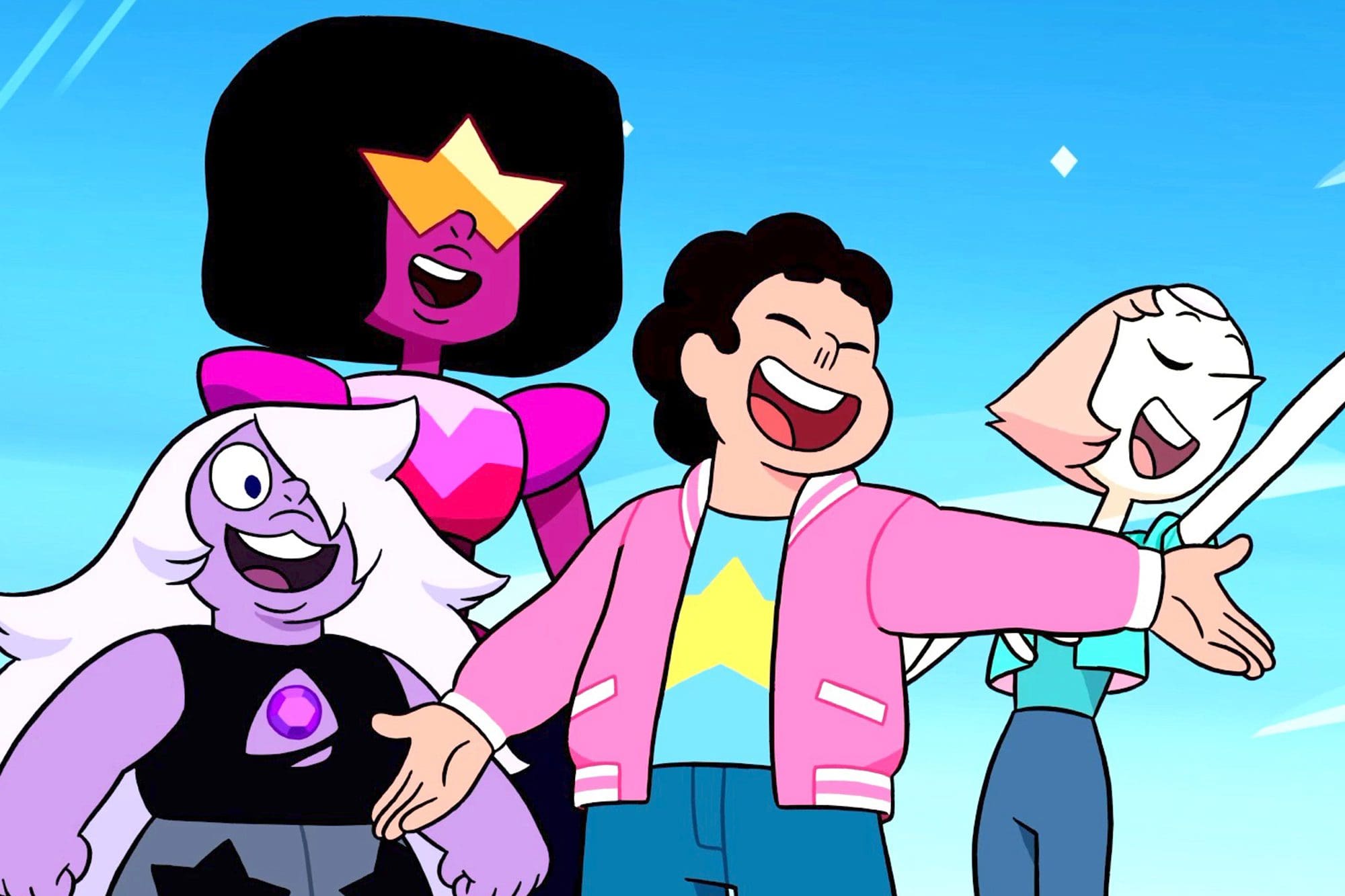
Looking back at the cartoons I loved as a child and adolescent, I am surprised how many of those shows depicted trauma and explored how various characters coped with the ensuing psychological suffering. In retrospect, shows like Batman: The Animated Series and Dragon Ball Z revolved around clear trauma narratives, though some series addressed these issues more directly than others. Fast-forwarding to today, I find that animated shows continue to portray trauma for dramatic purposes, but I am amazed at how much more normalized, realistic, and healthily these depictions are. The Legend of Korra and Steven Universe Future include wonderful storylines involving their main characters experiencing and processing traumatic events, and I am especially impressed with how much nuance Steven Universe Future addresses the subject.
Following the climax of Steven Universe, the titular character has undergone numerous traumatic events. As explained by Dr. Maheswaran in “Growing Pains,” Steven has physically healed from significant injuries sustained during his childhood but has never psychologically healed from his experiences. Having lived through many life-or-death situations, taken part in an interstellar war, witnessed loved ones become kidnapped and brutally injured, and discovered shocking truths about his family and himself, Steven faces the psychological toll of never processing the trauma brought on by these events.
Dr. Maheswaran describes these moments from Steven’s past as “adverse childhood experiences.” This phrase refers to an actual medical/mental health concept that explores how traumatic events from one’s youth can negatively impact a person’s development, health, and relationships. ACEs (Adverse Childhood Experiences) are commonly discussed in trauma literature to understand how childhood trauma relates to a person’s current functioning, to determine a person’s level of risk for future physical/mental health problems, and to develop better interventions and resources to prevent these events from happening or lessen their impact. ACEs include such things as abuse, neglect, and difficult household dynamics. Dr. Maheswaran refers to ACEs to explain Steven’s glowing pink transformation, dramatic changes in appearance, and sudden bursts of unknown powers. Importantly, while Jasper presents these new abilities as a boon, a medical professional like Dr. Maheswaran recognizes them as dangerous side-effects to years of psychological trauma. This negative perspective on Steven’s new powers is cemented when Steven transforms into a giant monster capable of destroying Beach City in the aptly named “I Am My Monster.”
Let’s compare Steven’s transformation to the concept of Super Saiyans in Dragon Ball Z. In the incredibly popular anime, several members of an alien race known as Saiyans (as well as human-Saiyan hybrids) are able to channel their rage and energy to dramatically increase their power levels. Much like Steven’s pink glow, Saiyans that transform into Super Saiyans experience notable changes in appearance: their hair becomes blonde and they emit a yellow aura from their bodies.
Throughout Dragon Ball Z, most characters’ initial transformation into this special form is brought on by a traumatic event. For Goku, seeing an intergalactic tyrant mercilessly kill his best friend sparks this change. For Trunks, discovering that evil androids had murdered his mentor initiates his transformation. And for Gohan, witnessing his friends be violently assaulted and watching a kind-hearted ally be murdered causes him to reach an even more powerful form of Super Saiyan. Each of these moments come with significant anguish and fury, but the show generally portrays these Super Saiyans as beings with immense power rather than individuals suffering from tragic loss. In time, the characters master this ability in order to defeat more powerful foes. So while these inciting events are clearly traumatic, each tragedy is ultimately presented as a necessary sacrifice that forces the hero to unleash his anger on an enemy.
Steven Universe Future flirts with this idea of trauma as a source of power when Jasper trains Steven to control his pink transformation in the episode “Fragments.” Steven becomes incredibly destructive under Jasper’s tutelage, but trying to harness his trauma-induced power ultimately backfires and causes Steven to commit an atrocity that directly contradicts his moral compass. Even with Jasper’s training, then, Steven is unable to truly control his new form. Instead, the trauma consumes Steven until he morphs into an unrecognizable kaiju.
And there lies the difference in how Steven Universe Future and Dragon Ball Z depict trauma. In the later show, trauma is used as a plot device to help the heroes defeat a villain. Steven Universe Future rejects this narrative tool, however, and instead presents trauma as a toxic force that requires support and healing. Trauma is something to process rather than something to master. Unable to control or repress his trauma any longer, Steven needs the unconditional love and empathy of his friends to admit that he is in pain and needs help. Steven has to accept that he cannot overcome his trauma by ignoring it and instead must allow himself to be vulnerable. It is at this point that Steven begins the difficult task of working through his traumatic memories. Months later in the series finale, Steven reveals that he is now working with a therapist to process the experiences from his childhood. He is not automatically healed or relieved of his anguish, but the show makes it clear that Steven is at greater peace with himself and is making progress in accepting the past and embracing the future.
Steven Universe Future’s exploration of trauma is a beautiful revelation of how far animated series have come in their depictions of mental health. The series stands as a prime example of how important it is to normalize this topic for kids as well as adults. In showing an intergalactic hero learn to navigate his traumatic past, Steven Universe Future suggests that seeking support from love ones and professionals is not a sign of weakness but is an act of strength.

